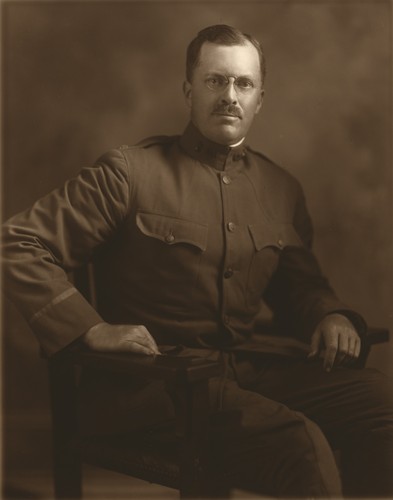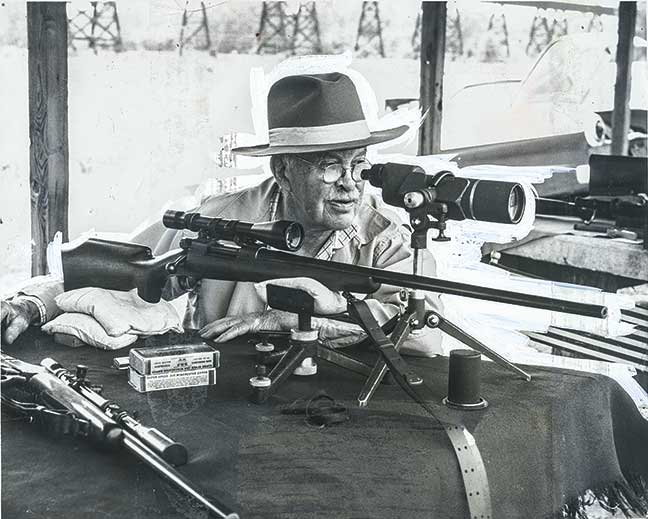A poet the equal of Robert Frost? How about the musical genius of Beethoven, Rossini, or George Gershwin? More important, will another George Washington, Abe Lincoln, or Thomas Jefferson ever grace our White House again?
Many of us aspire to reach a high degree of proficiency in our pastimes – to pick a guitar like B.B. King, hit a golf ball like Jordan Spieth, or paint a waterfowl scene like or own Joshua Spies. We seldom reach these levels, but it is our attempts that keep us going. I know it keeps me going!
I want to drop down about five gears and talk about something totally mundane – outdoor writing. Was there ever a writer who was to the great outdoors what Louis Armstrong was to entertainment? Archibald Rutledge had his quail, Ernest Hemingway had deep sea fishing, Jack O’Connor had his mountain sheep, and Elmer Keith had his guns. But what about the total package?

In 1901, northern British Columbia was unexplored wilderness. Bill Andrews and Townsend Whelen combined hunting and exploration into a six month plus journey that brought them through the British Columbia unknown. Their sojourn began in July 1901.
We’re talking no ATV’s, snowmobiles, or communication. Keep in mind that their time frame included December! They would begin at a Hudson Bay post on the Scumscum River and work their way north to the Yukon. They covered over 1,500 miles.
I have enjoyed thinking about their 1901 outfit as compared to how we would do it today. Their outfit included: two saddle horses, four pack horses, and a dog. They packed two extra sets of shoes for each horse and the tools for shoeing them. How many outdoor writers today can shoe horses and load full panniers on pack horses? In my circle of hunting partners, I’d bet on Doug Koupal.
The gear included: Ten heavy army blankets, a tent, two canvas sweat pads, two axes, 25 boxes of wax matches, a can of gun oil and cotton gun rags, two cleaning rods, two changes of underwear, six pairs of socks, six pairs of moccasins each and leather for re-soling, toilet articles, a hundred yards of fish line, two dozen fish hooks, an oil stove, screwdriver, file, needles and thread. Since clothes other than underwear and socks aren’t mentioned, the clothes they wore were it.
For cooking utensils they carried two frying pans, three kettles, two tin cups, three tin plates, and a gold pan. Bill carried a .38-55 Model 94 Winchester. Townsend toted a .40-72 Model 95 Winchester.
Both men packed 300 cartridges each. Both rifles had Lyman sights, and both men carried an extra front sight, main spring, and firing pin for their rifles. Neither rifle failed. Whelen hand-loaded the ammo for both rifles.
The four packhorses carried approximately 150 pounds of food and gear each. Included were 150 lbs. of flour, 50 lbs. of sugar, 30 lbs. of beans, 10 lbs. of rice, 10 lbs. of dried apples, 20 lbs. of prunes, 30 lbs. of cornmeal, 20 lbs. of oatmeal, 30 lbs. of potatoes, 10 lbs. of onions, 50 lbs. of bacon, 25 lbs. of salt, 10 lbs. of soap, 10 lbs. of tea, 10 lbs. of tobacco, six cans of baking powder, and a pound of pepper. Whelen didn’t mention oil for the stove.
Can we learn anything from Andrews and Whelen? When they killed a deer or sheep for camp meat, they first ate the ribs as they relished them. Of all the deer and antelope I’ve killed, we have never grilled the ribs. Generally, I cut the meat from between the ribs and use it for burger. What about you? Any advice?
The two men took “deer” rifles into grizzly bear country, but they didn’t know it, and they didn’t worry about it. Today’s expert outdoor writer would look at a .38-55 as totally inadequate. He would carry a .300 magnum or more. There’s way too much gun hype in today’s outdoor world. It’s all about marketing guns.
About fifteen years ago, Doug Koupal and I made a ten-day horseback hunt into the Canadian Rockies of Alberta’s Jasper Wilderness. I can relate to Whelen and Andrews.
At that altitude at that time of year, I felt like I’d freeze to death if it weren’t for the little wood stove in my tent. If Whelen were around today, I’d bet that would say that the ten woolen army blankets were the most important gear they had.
I can’t imagine six months with one change of underwear apiece! Were those old long johns strong enough to weather that kind of wear and tear? I would also imagine that Whelen’s soap would peel the hide from a buffalo calf’s back. Those guys were tough!
Well, “Townie” as his friends called him, could walk the walk. He’s what I’d call a real outdoor writer. Like I said, they don’t make ‘em like they used to.

